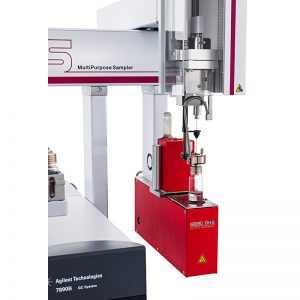Static (equilibrium) headspace sampling is commonly used for GC determination of volatiles in solid and liquid samples. Since this technique relies on the analyte partitioning between the sample and headspace and uses a small injection volume it may not provide adequate detection limits, particularly for higher molecular weight, higher boiling analytes and for polar analytes in aqueous samples.
In this study we describe the use of an automated dynamic headspace sampler for determination of volatiles in aqueous samples. This sampler uses a two-needle design to flush the headspace of standard headspace vials onto replaceable adsorbent traps that can be thermostatted to optimize analyte recovery and control interference from water vapor. Following analyte transfer, the adsorbent traps can be automatically dry purged to further eliminate water before introduction into the integrated thermal desorber. This design enables automated optimization of trapping conditions including choice of adsorbent, and has the potential for automated internal standard addition and automated calibration.
To illustrate the versatility of the DHS system, examples of the determination of trace levels of volatile organic compounds (VOCs) in aqueous samples are shown. Detection limits and linearity are discussed in the following. In a previous Application Note 4/2008, optimization of parameters required for dynamic headspace analysis of aqueous samples was performed and results from several other sample types were presented as examples.



